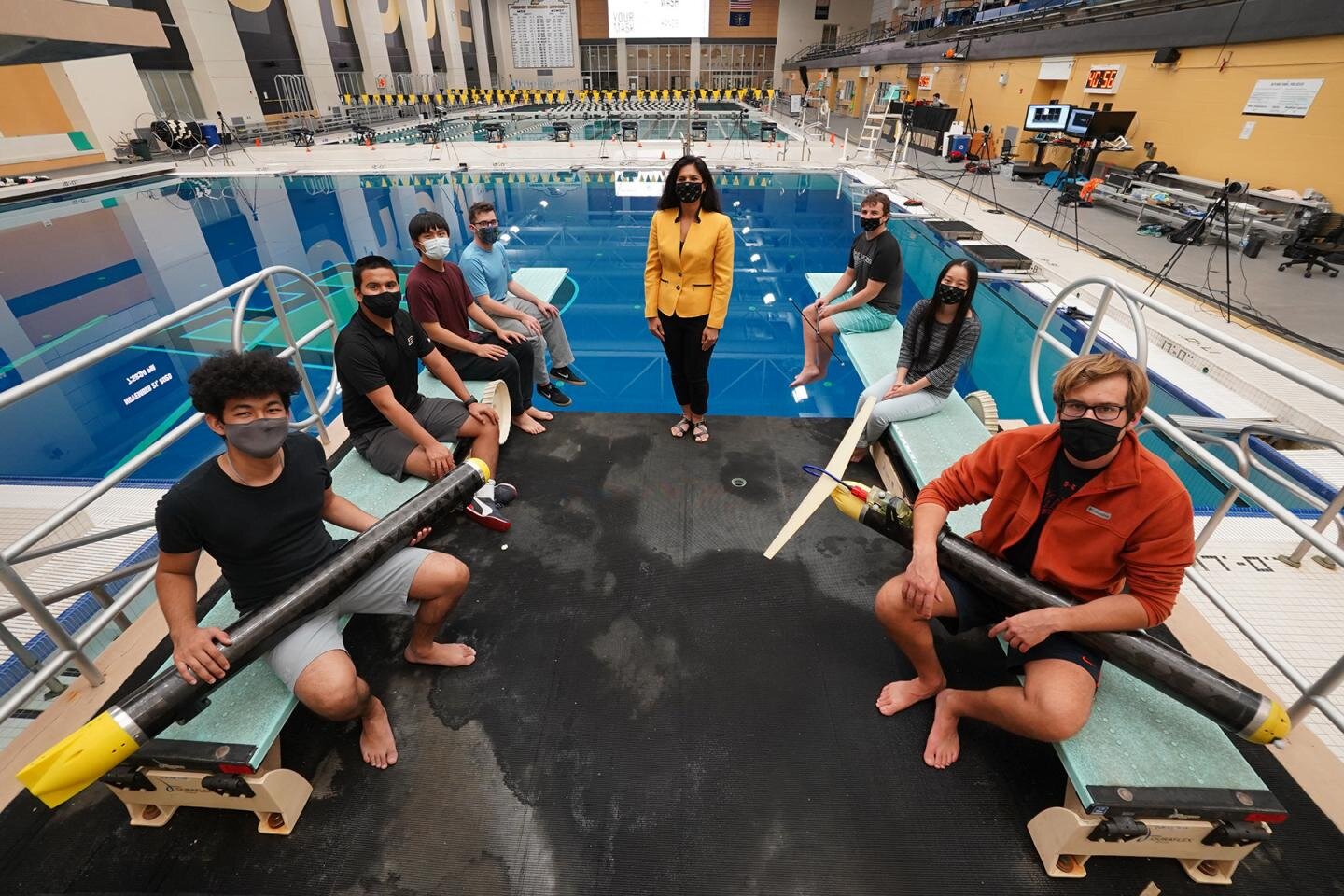#Agile underwater glider could quietly survey the seas

“#Agile underwater glider could quietly survey the seas”

Autonomous underwater vehicles have become versatile tools for exploring the seas. But they can be disruptive to the environment or have trouble traveling through confined spaces.
Purdue University researchers are studying an alternative: highly maneuverable, low-cost underwater gliders that operate silently. Components and sensors of the glider also can be easily swapped out or added according to a wide range of mission specifications.
“Our goal is persistent operation of mobile robots in challenging environments,” said Nina Mahmoudian, associate professor of mechanical engineering. “Most underwater robots have limited battery life and must return back after just a few hours. For long-endurance operations, an underwater glider can travel for weeks or months between charges but could benefit from increased deployment opportunities in high-risk areas.”
An underwater glider differs from other marine robots because it has no propeller or active propulsion system. It changes its own buoyancy to sink down and rise up, and to propel itself forward. Although this up-and-down approach enables very energy-efficient vehicles, it presents several problems: The vehicles are expensive, slow and not maneuverable, especially in shallow water.
Mahmoudian has developed an agile vehicle called ROUGHIE (Research Oriented Underwater Glider for Hands on Investigative Engineering). Shaped like a torpedo, ROUGHIE is about four feet long and features no outward propulsion or control surfaces other than a static rear wing.
When deployed from shore or from a boat, ROUGHIE pumps water into its ballast tanks to change its buoyancy and provide initial glide path angle. To control its pitch, the vehicle’s battery subtly shifts its weight forward and backward, acting as its own control mechanism. To steer, the entire suite of inner components are mounted on a rail that rotates, precisely controlling the vehicle’s roll. The design is modular and adaptable for a variety of applications.
“This is a totally unique approach,” Mahmoudian said. “Most underwater gliders can only operate in deep oceans and are not agile for confined spaces. ROUGHIE has a turning radius of only about 10 feet, compared to an approximately 33-foot turn radius of other gliders.”
ROUGHIE is so maneuverable that Mahmoudian’s team has been testing it in the diving well at Purdue’s Morgan J. Burke Aquatic Center. By installing a motion capture system of infrared cameras below the water, they can track the vehicle’s movements and characterize its maneuvering behavior in three dimensions with millimeter accuracy.
“We program ROUGHIE with flight patterns ahead of time, and it performs those patterns autonomously,” Mahmoudian said. “It can do standard sawtooth up-and-down movements to travel in a straight line, but it can also travel in circular patterns or S-shaped patterns, which it would use when patrolling at sea. The fact that it can perform these tasks within the confined environment of a swimming pool using nothing but internal actuation is incredibly impressive.”
This maneuverability means that ROUGHIE is able to follow complex paths and can explore real-world areas other underwater gliders can’t.
“It can operate in shallow seas and coastal areas, which is so important for biology or climate studies,” Mahmoudian said. “And because it’s totally quiet, it won’t disturb wildlife or disrupt water currents like motorized vehicles do.”
ROUGHIE can be fitted with a variety of sensors, gathering temperature, pressure and conductivity data vital to oceanographers. Mahmoudian’s team has sent ROUGHIE into small ponds and lakes with a fluorimeter to measure algae bloom. The team also outfitted the vehicle with compact magnetometers, capable of detecting anomalies like shipwrecks and underwater munitions. This research has been published recently in the journal Sensors.
Mahmoudian and her students have been developing ROUGHIE since 2012 when she began the project at Michigan Technological University.
“My students designed and built it from scratch, and they developed the control and navigational algorithms in parallel,” Mahmoudian said. “For the price of a current commercial vehicle, we can put 10 of these in the water, monitoring conditions for months at a time. We believe this vehicle has great value to any local community.”
Underwater robots to autonomously dock mid-mission to recharge and transfer data
Brian R. Page et al, Compact Quantum Magnetometer System on an Agile Underwater Glider, Sensors (2021). DOI: 10.3390/s21041092
Citation:
Agile underwater glider could quietly survey the seas (2021, February 23)
retrieved 23 February 2021
from https://techxplore.com/news/2021-02-agile-underwater-glider-quietly-survey.html
This document is subject to copyright. Apart from any fair dealing for the purpose of private study or research, no
part may be reproduced without the written permission. The content is provided for information purposes only.
If you liked the article, do not forget to share it with your friends. Follow us on Google News too, click on the star and choose us from your favorites.
For forums sites go to Forum.BuradaBiliyorum.Com
If you want to read more Like this articles, you can visit our Science category.




